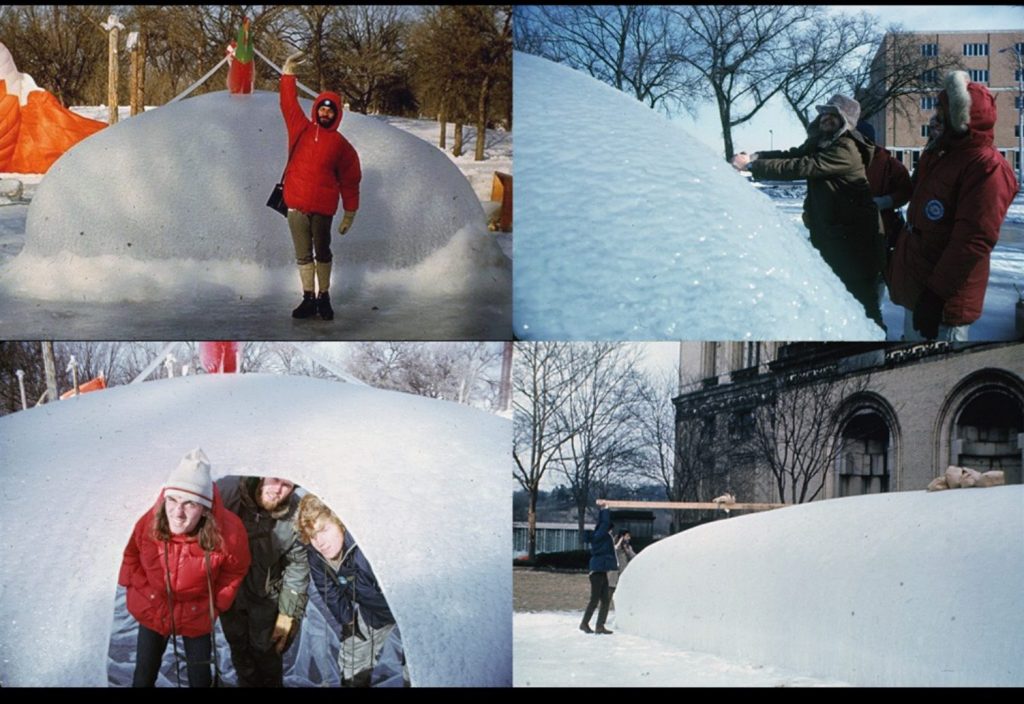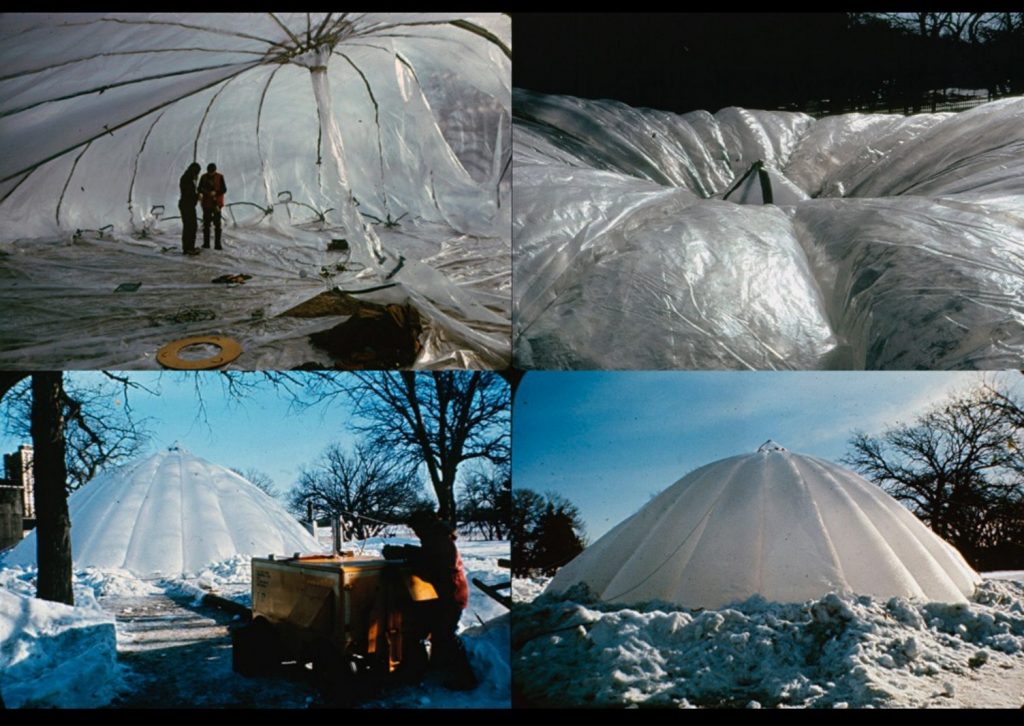

This is actually the project of my current architecture professor, the former head of the School of Architecture, Steve Lee’s project. It was done when he was a sophomore at CMU (1979), alongside other students; some became my other professors. This project investigates the affordance of using robust and elastic membrane materials to construct scaffolding, and then utilizing extreme cold to freeze water between two layers of membranes. It was intended to be an architecture sculpture meant to be built during winter and melt once spring arrives.
The process is documented in the bottom images. Two layers of membrane serve as the container for the water, which volume is calculated based on intended building size, support strength (bottom top left, skinny metal support elements), maximum deliverable air pressure (used as a way to pressurize the interior, therefore creating an invisible supporting element), and dome curvature. These calculations and plans allow for a very thin, large, and strong structure. And the construction process, though solely dependent on the weather, can be completed overnight.
This process uses an elastomeric material as the scaffolding for liquid solidification, a process that can be replicated in many other applications, such as medical use. Soft, elastomer materials such as this can form temporary structures that can stop bleeding or open arteries.
Some could say this is a scaled-up version of a soft, kinetic actuator, as its motion is controlled by air pressure and built-in membrane strength. The same principles can be applied at a different scales,s for example, a much smaller iteration can use hydraulic instead of air to achieve a more significant internal pressure, therefore, a more robust scaffolding.